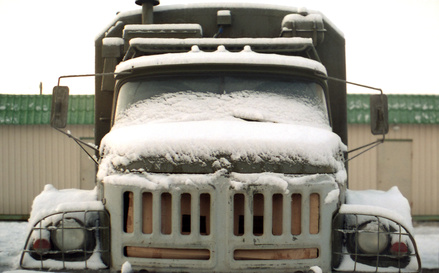
Starting trucks in colder climates can be a major issue because of the nature of diesel fuel. Diesel is composed of straight and branched chain hydrocarbons, many of which can form paraffin waxes. These become solid at the lower ambient temperatures found in colder geographic areas. The amount of paraffin wax diesel contains depends on the kind of crude oil used to produce the diesel fuel and the process used to manufacture it. A few cold-weather tricks may help when the engine on your diesel truck won't turn over.
Start your truck's engine with a block heater when the fuel filter is too cold to flow properly. A block heater keeps the engine oil and coolant warm enough to circulate by directly heating the engine block. The one drawback is that a heater needs to be plugged in to an electrical connection to work. Block heaters can be installed by a mechanic, but many diesel trucks come with them as standard or optional equipment.

Add kerosene to lower the wax content of your diesel fuel. Because diesel fuel contains waxy hydrocarbons, it crystallizes when the ambient temperature drops too low. Adding kerosene -- about a gallon for every 10 gallons of diesel in your tank -- will disperse the wax crystals. Kerosene is a lot like diesel fuel; however, it has a lower wax content than diesel so it doesn't "gel" as quickly. The one drawback of adding kerosene is that you will get fewer miles to the gallon -- but at least you will get your truck started.

Use specialized fuel additives to prevent starting issues in cold weather. Unlike kerosene, adding a cold flow improver or anti-gel product can stop wax crystals from forming in your fuel tank.